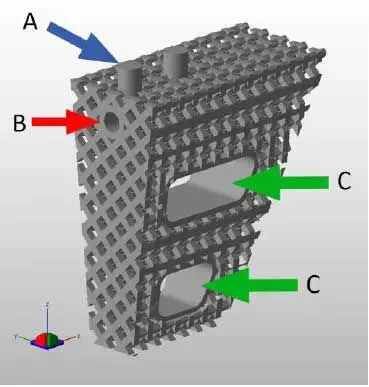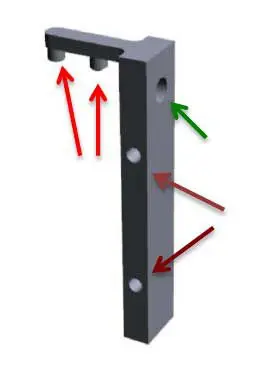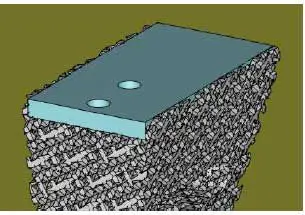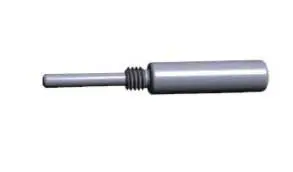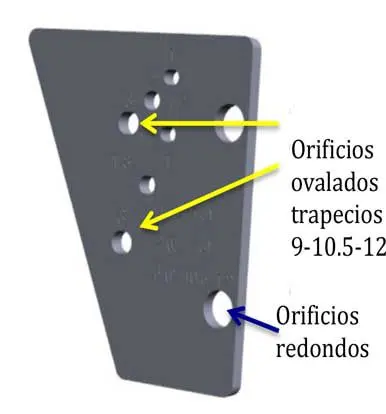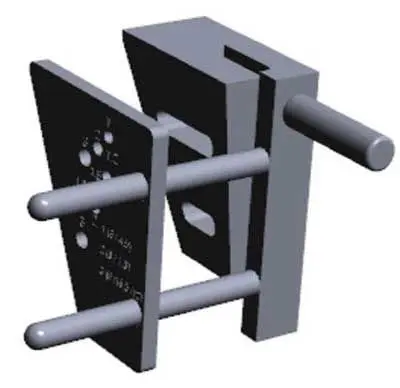Insorvet's porous titanium trapezoids are manufactured with a titanium structure by addition. They have a series of holes with the following purposes (Fig. 1 and 2).
In its upper part it presents two tetones (a) although they will surely end up being 2 holes (Fig. 2). It contains a longitudinal hole (b) and oval holes (c) that form windows inside the trapezoid and are the passages for the needles.
Assuming that the definitive trapeze has 2 holes in its upper part (A), in them the piece “l inverted” is attached (Fig. 3), which is the basis of the guide of the needles. This piece has two tetones (d) that are inserted into the upper holes of the trapezoid. It also has a hole in its lateral part (E), where a bolt or rod is introduced (Fig. 4) that is inserted into the hole E of the inverted piece and in the hole B of the trapeze.
Next, two rods are screwed in the holes F of the l inverted and through them we introduce the guide of the needles through their round holes (Fig. 5). Oval holes are for the passage of needles and are positioned by pairs vertically (see Fig. 5). The smallest holes are for the trapezoids of 3.0 and 4.5mm, the medium for the trapezons of 6.0 and 7.5mm and the largest for the trapezons of 9.0, 10.5 and 12 mm. These oval holes allow the needles on the transverse plane without leaving the margins of the trapezoid windows.
The final result once the assembly is finished is the one observed in Fig. 6.
The TTPs from Insorvet are "driven" into the bone thanks to the design of their surface, which allows them to be firmly stabilised without the need to apply screws or other fixation methods.
Regarding the fixation of the advanced fragment, we have 3 options: the pins, an independent plate from the trapezium, or a plate attached to the trapezium.
Needles:
The trapeziums of 3 and 4.5mm are fixed with 1.2mm needles, those of 6.0 and 7.5mm with 1.5mm needles, and those of 9.0, 10.5 and 12mm with 1.8mm needles. Case 1 and 2
Plate:
we can use the inclined arm plates from Insorvet. Case 3 and 4
Plate attached to the trapezium: the plate is fixed in the longitudinal hole (Fig. 1 B).
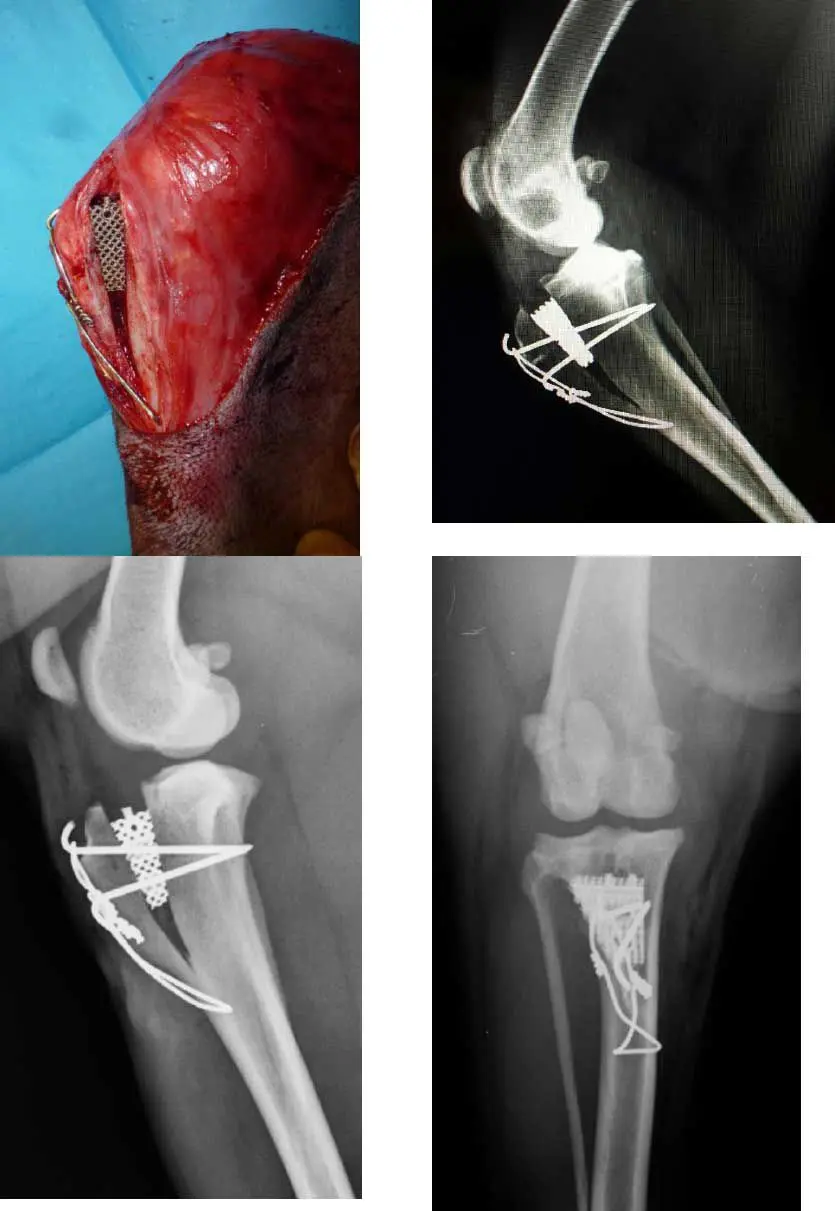
Case 1 y 2
Courtesy of Jose Luis Martinez
Case 3
Bulli, labourer of 30Kg
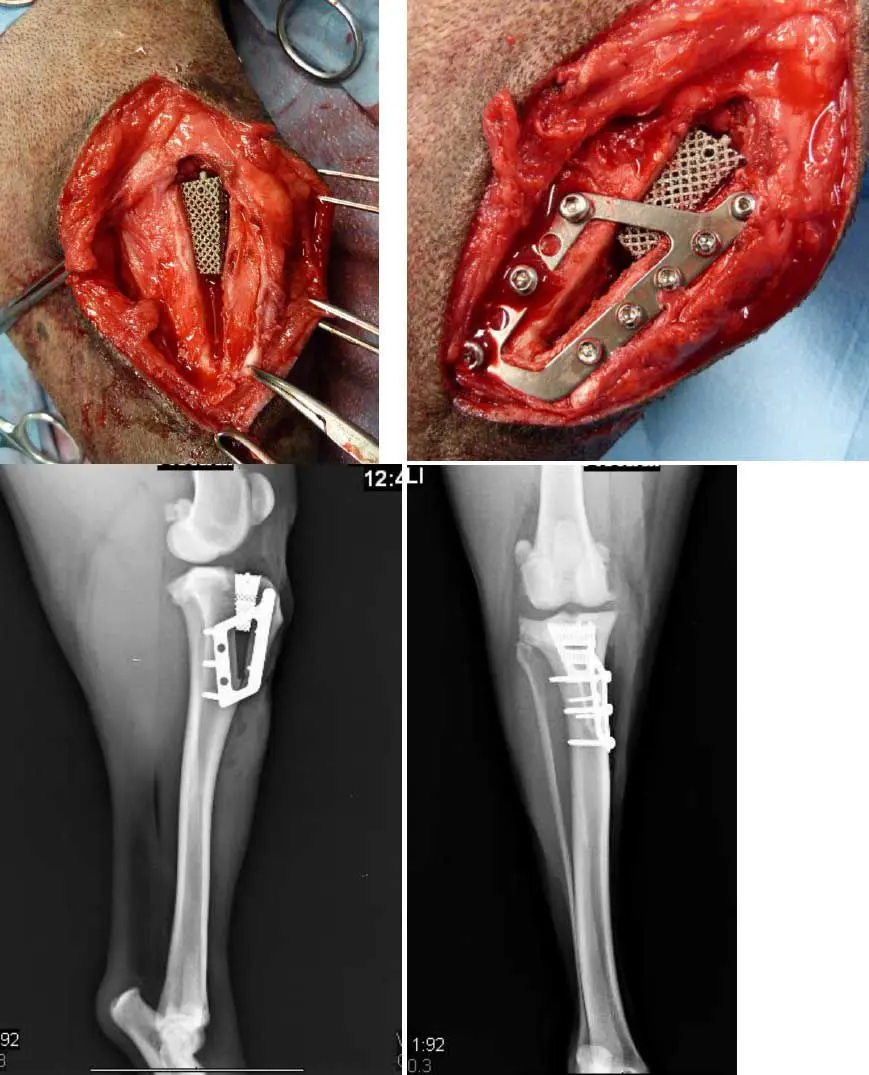
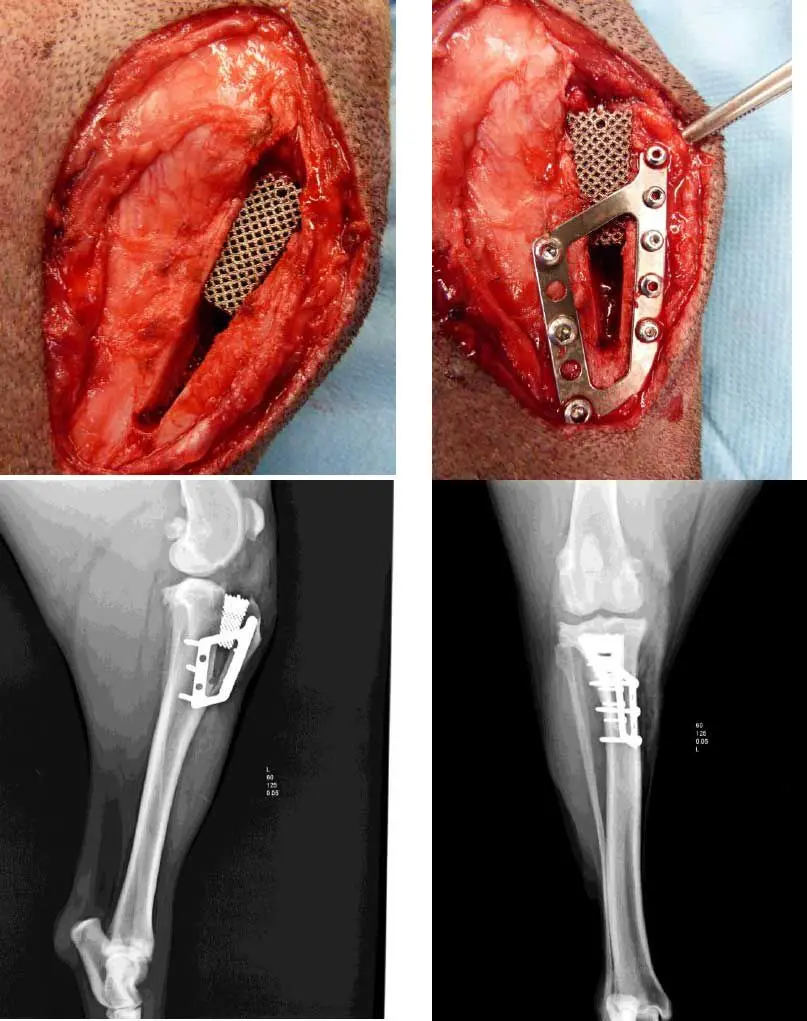
Case 4
Ura, rottweiler of 45Kg
